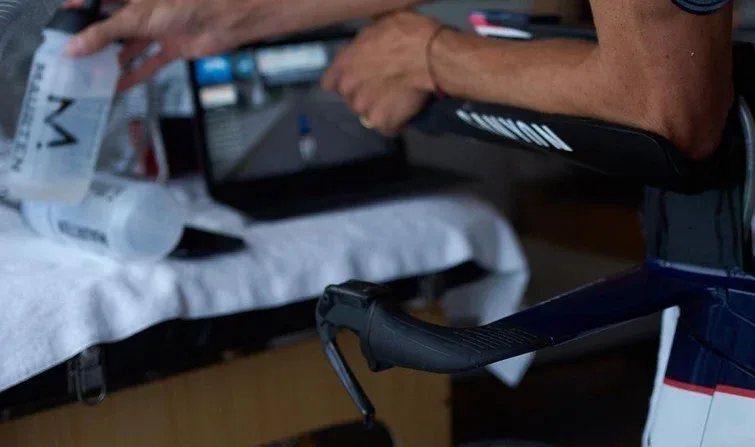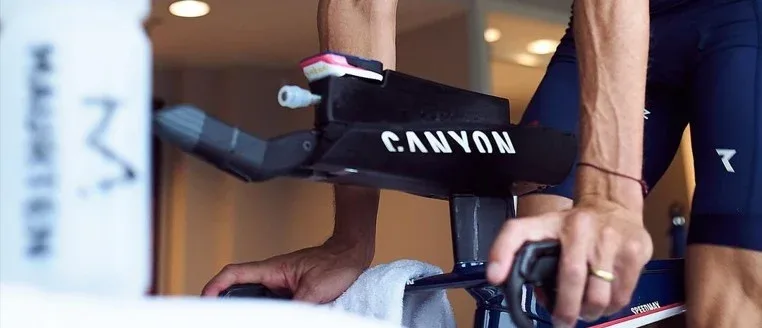Indoor training isn’t just a refuge from inclement weather or dwindling daylight. It’s a precision tool. By controlling variables like terrain and wind resistance, athletes can focus on specific training zones and intervals with laser precision.
Beyond the training benefits, there’s an undeniable safety advantage—no traffic, no road hazards, just you and your bike.
Setting Up Your Indoor Training Space
Success starts with preparation. That means dedicating a space for your training. Seek a location with good ventilation; indoor cycling can quickly become a sweaty affair.
Essential gear includes a good-quality turbo trainer or a smart trainer to simulate real-world cycling dynamics. Consider floor mats to reduce noise and sweat damage, a fan for cooling, adjustable lighting for comfort, and maybe a screen or speaker system for entertainment during longer rides.

Understanding and Utilizing Training Software
Modern indoor training is more than just pedaling in place. Platforms like Zwift and TrainerRoad have gamified the experience, offering virtual races, structured workouts, and even simulated real-world routes. Such tools not only provide structure to your training but also introduce an element of community and competition, keeping motivation high.
Choosing the Right Bike and Adjusting for Optimal Fit
Whether you opt for a road or triathlon bike for indoor sessions, fit is paramount. A poorly adjusted bike can lead to discomfort, inefficiency, and even injury. While professional bike fitting is recommended, understanding basic adjustments can ensure comfort and efficiency in your sessions.
Basics: Building an Indoor Routine
Every session should begin with a thorough warm-up and conclude with a cool-down. The core of your training will vary—some days will focus on high-intensity intervals, others on steady-state endurance rides. Techniques like cadence variations and standing climbs can mimic outdoor challenges, ensuring you’re prepared for any race-day scenario.
Periodization and Planning a Training Cycle
Structured training follows the principle of periodization, breaking the training calendar into specific phases, each with a distinct focus. From base building to peak performance and tapering, understanding how to phase and cycle your training ensures continuous improvement without burnout.
Advanced Training Techniques
For those seeking to push their limits, power-based training becomes invaluable. Understanding and regularly testing your Functional Threshold Power (FTP) allows for tailored, performance-boosting sessions. Paired with heart rate monitoring, these techniques ensure you’re always in the optimal training zone for your goals.
Cross-Training and Combining with Run and Swim Workouts
Triathlon is a balance, and so should be your training.
Even within the confines of indoor training, integrating strength workouts, flexibility sessions, and bike-to-run transition workouts can simulate the unique demands of race day.
Monitoring Progress and Adjusting Workloads
A training plan is a living document, shifting as you grow and evolve. Regular testing sessions, whether time trials or FTP tests, give tangible metrics of improvement. Equally important is recognizing when to pull back, with rest days and deload weeks crucial for long-term success.
Nutrition and Hydration for Indoor Training
Even without the sun beating down, indoor sessions can be grueling. Proper nutrition before, during, and after workouts ensures sustained energy and optimal recovery.
And while you might not feel the wind drying your sweat, hydration remains crucial. If not more than before; always have a water bottle within arm’s reach.
Tips for Staying Motivated
As with any repetitive task, indoor training can sometimes feel monotonous. Setting clear, achievable goals can provide motivation. Virtual races and challenges introduce competition, and never underestimate the power of a good playlist or podcast episode to carry you through a tough session.
Conclusion
Indoor bike training, when approached with dedication and a strategic plan, can be a game-changer for triathletes. Whether you’re supplementing outdoor rides or going fully indoor during the off-season, the controlled environment provides a unique opportunity to refine your skills, build your strength, and ensure you’re race-ready, come what may.
